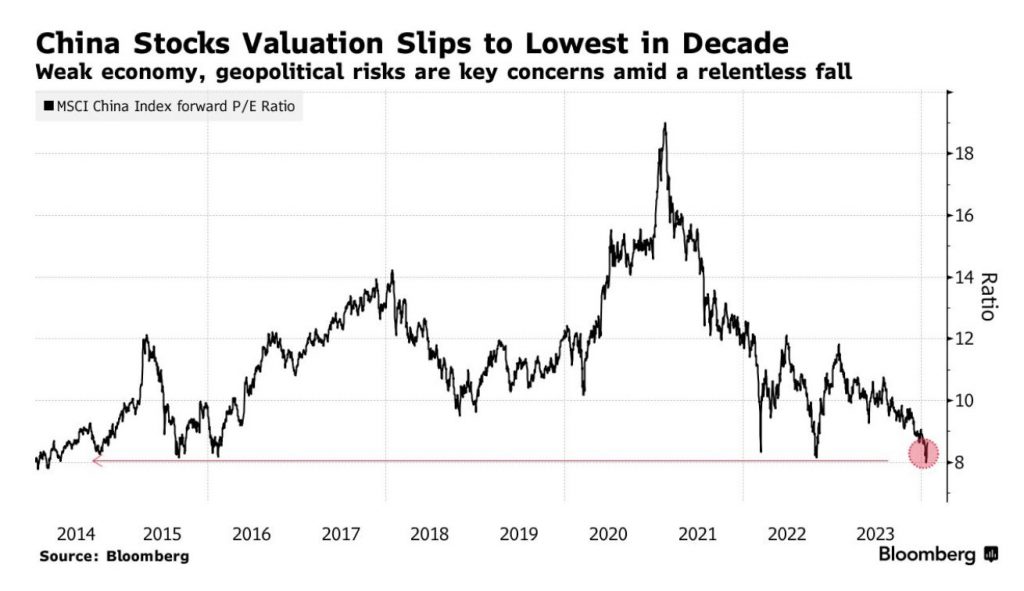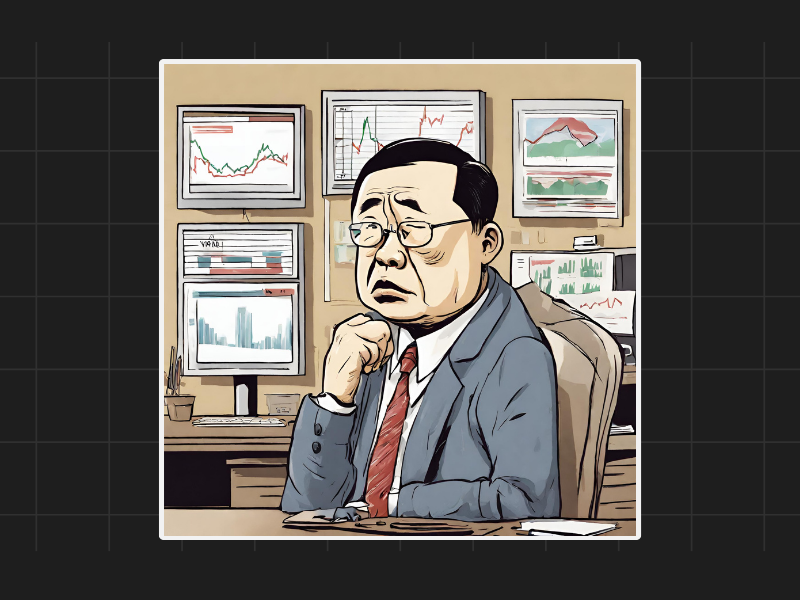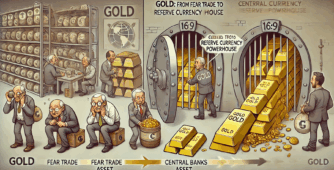One commonly used financial metric is the price-earnings ratio (P/E ratio), which compares a company’s stock price to its earnings per share. In this blog post, we will explore a valuation chart of Chinese stocks by Bloomberg and discuss the problems around the P/E ratio narrative in the Chinese market.
The MSCI China index’s forward P/E ratio currently stands at eight. This means that the average Chinese stock is being valued at eight times its projected earnings. This may come as a surprise considering China’s growth rate and its position as one of the top growing economies globally.

To put things into perspective, it is important to compare this valuation with other markets. For instance, India’s P/E ratio is at 25, significantly higher than China’s eight. Despite the differences, both valuations are considered justified by the market. However, the question arises: How can the market repeatedly justify a wide range of P/E ratios?
P/E ratios can vary greatly within a country and from year to year. A country could be justified at a P/E of ten in one year, eighteen in another, and eight in yet another. This variability raises concerns about the reliability and predictability of P/E ratios as a valuation metric. It suggests that inflating and deflating P/E ratios could simply be a means to rationalize current market conditions.
Historically, investors in India used to consider a P/E ratio of 10-12 as a good buying point and 18-20 as a good selling point. However, this trend has significantly changed over the past decade. The P/E ratio in India has not fallen to the previous acceptable levels of 10-12, challenging traditional valuation practices.
The shift in P/E ratios can be attributed to the changes in the global economic landscape. Over the years, the money supply in the world has significantly increased, with the Federal Reserve’s balance sheet growing from 5 trillion to 34 trillion. With such a surge in money supply, it is natural for asset valuations to reflect this inflationary pressure. Therefore, it becomes challenging to assess whether a P/E ratio of 80, for example, is high, low, or has the potential to change in the future.
It is important to note that financial ratios and parameters, including the P/E ratio, are primarily used by analysts to rationalize buying or selling positions. Depending on the analyst’s perspective, they may argue that a stock’s P/E ratio should go up by 50% or that it is too high and should decrease by 20%. These assessments are highly subjective and lack a clear consensus.
Stocks with strong price trends often focus on the potential growth of earnings in the coming years. Trying to map this exponential curve using traditional financial metrics in an excel sheet becomes futile. In reality, stocks may rise significantly in price, plateau, and then align with earnings growth, resulting in a decrease in the P/E ratio.

If you have any questions, please write to support@weekendinvesting.com









